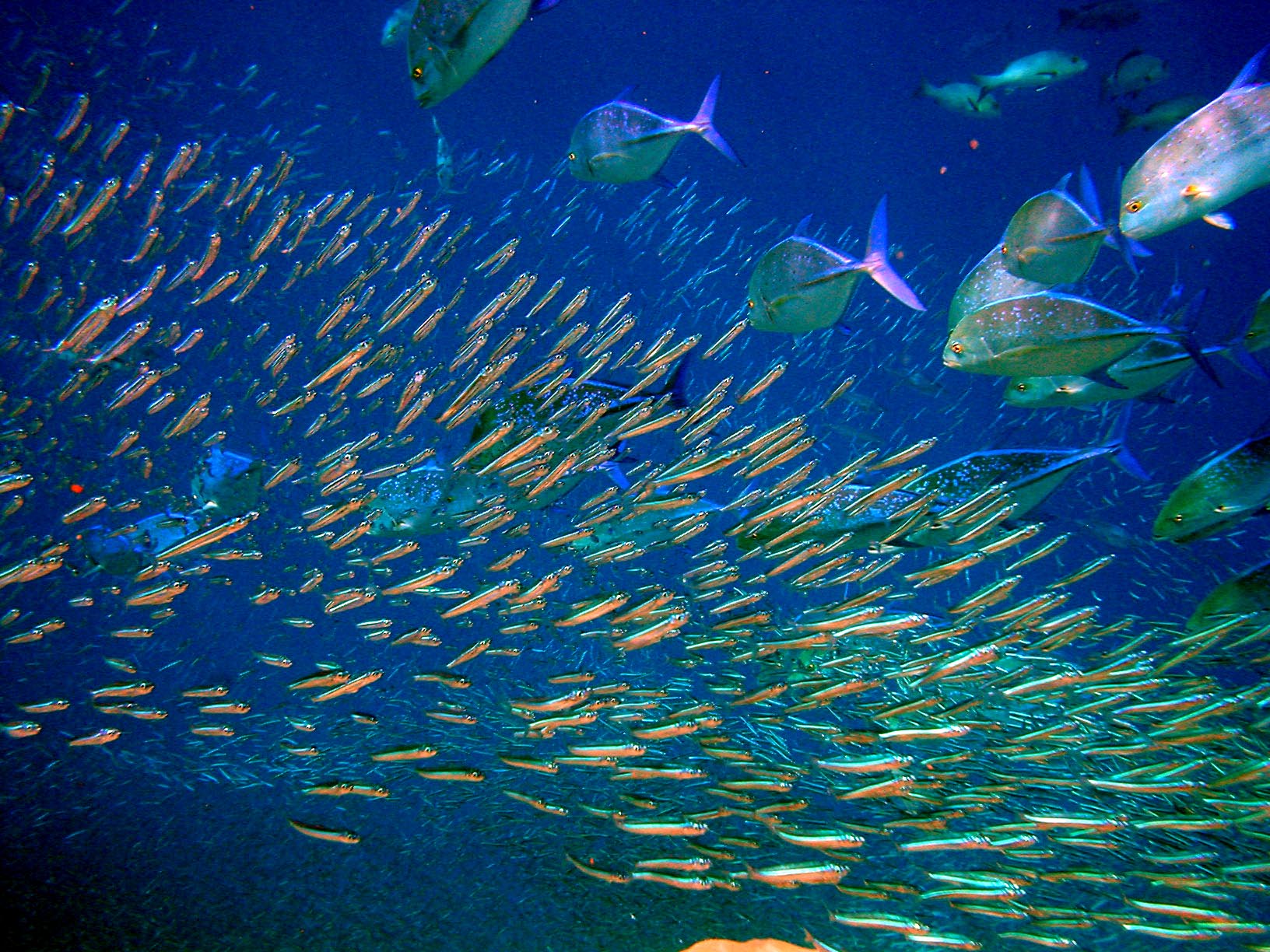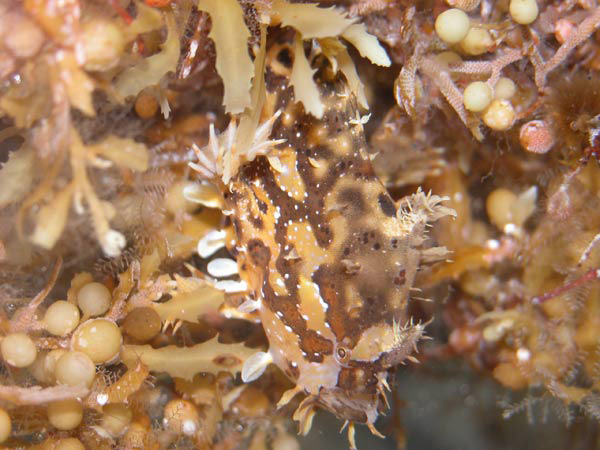|
Robia Banului
''Robia'' is a monospecific genus of marine ray-finned fish belonging to the family Caulophrynidae, the fanfins. Its only species is ''Robia legula'' which is known from a single specimen collected in the western central Pacific Ocean where it is found at depths of . Taxonomy ''Robia'' was first proposed as a genus in 1979 by the American ichthyologist Theodore Pietsch from a holotype of ''Robia legula'' collected from the Banda Sea in the western Pacific at 4°56.5'S, 129°59.5'E from a depth between . ''Robia'' is a monotypic genus and is one of the two genera along with ''Caulophryne'', making up the family Caulophrynidae. which the 5th edition of ''Fishes of the World'' classifies within the suborder Ceratioidei of the order Lophiiformes, the anglerfishes. Etymology ''Robia'' honors Bruce H. Robison of the Monterey Bay Aquarium Research Institute, whose nickname was "Robie", and is a possessive recognising his research bathypelagic fish. The specific name ''legula'' mean ... [...More Info...] [...Related Items...] OR: [Wikipedia] [Google] [Baidu] |
Theodore Wells Pietsch III
Theodore Wells Pietsch III (born March 6, 1945) is an American systematist and evolutionary biologist especially known for his studies of anglerfishes. Pietsch has described 72 species and 14 genera of fishes and published numerous scientific papers focusing on the relationships, evolutionary history, and functional morphology of teleosts, particularly deep-sea taxa. For this body of work, Pietsch was awarded the Robert H. Gibbs Jr. Memorial Award in Systematic Ichthyology by the American Society of Ichthyologists and Herpetologists in 2005. Pietsch has spent most of his career at the University of Washington in Seattle as a professor mentoring graduate students, teaching ichthyology to undergraduates, and curating the ichthyology collections of the UW Burke Museum of Natural History and Culture. His zoological author abbreviation is Pietsch. Education Pietsch attended John Adams High School in Indiana. After a B.A. in zoology at the University of Michigan he did a M.S. and P ... [...More Info...] [...Related Items...] OR: [Wikipedia] [Google] [Baidu] |
Bathypelagic Fish
Pelagic fish live in the pelagic zone of ocean or lake waters—being neither close to the bottom nor near the shore—in contrast with demersal fish that live on or near the bottom, and reef fish that are associated with coral reefs. The marine pelagic environment is the largest aquatic habitat on Earth, occupying 1,370 million cubic kilometres (330 million cubic miles), and is the habitat for 11% of known fish species. The oceans have a mean depth of . About 98% of the total water volume is below , and 75% is below . Moyle and Cech, p. 585 Marine pelagic fish can be divided into coastal (inshore) fish and oceanic (offshore) fish. Coastal pelagic fish inhabit the relatively shallow and sunlit waters above the continental shelf, while oceanic pelagic fish inhabit the vast and deep waters beyond the continental shelf (even though they also may swim inshore). Pelagic fish range in size from small coastal forage fish, such as herrings and sardines, to large apex predato ... [...More Info...] [...Related Items...] OR: [Wikipedia] [Google] [Baidu] |
Banda Neira
Banda Neira (also known as Pulau Neira) is an island in the Banda Islands, Indonesia. It is administered as part of the administrative Banda Islands District (''Kecamatan Kepulauan Banda'') within the Central Maluku Regency in the province of Maluku. To the south is the main town of the same name, which is the largest town in the archipelago with around 7,000 inhabitants. Geography The island has a length of about and a width of , with Mount Papenberg as the highest elevation at . It is located approximately south of the island of Seram. The island is at the center of the Banda Islands group, with the neighbouring island of Banda Api (essentially the cone of the volcanic Gunung Api) situated around 100 metres west, and Banda Besar (also called Lonthoir, formerly Lontar) being around 1.5 km to the south and east. Banda Api and Banda Neira form the centre and Lonthoir forms most of the surviving rim of a submerged caldera with a diameter of around seven kilometers. H ... [...More Info...] [...Related Items...] OR: [Wikipedia] [Google] [Baidu] |
Olfactory Receptor
Olfactory receptors (ORs), also known as odorant receptors, are chemoreceptors expressed in the cell membranes of olfactory receptor neurons and are responsible for the detection of odorants (for example, compounds that have an odor) which give rise to the sense of smell. Activated olfactory receptors trigger nerve impulses which transmit information about odor to the brain. In vertebrates, these receptors are members of the class A rhodopsin-like family of G protein-coupled receptors (GPCRs). The olfactory receptors form the largest multigene family in vertebrates consisting of around 400 genes in humans and 1400 genes in mice. In insects, olfactory receptors are members of an unrelated group of ligand-gated ion channels. Expression In vertebrates, the olfactory receptors are located in both the cilia and synapses of the olfactory sensory neurons and in the epithelium of the human airway. Sperm cells also express odorant receptors, which are thought to be involved in ... [...More Info...] [...Related Items...] OR: [Wikipedia] [Google] [Baidu] |
Esca (fish Anatomy)
The anglerfish are ray-finned fish in the order Lophiiformes (). Both the order's common and scientific name comes from the characteristic mode of predation, in which a modified dorsal fin ray acts as a lure for prey (akin to a human angler, and likened to a crest or "'' lophos''"). The modified fin ray, with the very tip being the esca and the length of the structure the illicium, is adapted to attract specific prey items across the families of anglerfish by using different luring methods. Anglerfish occur worldwide. The majority are bottom-dwellers, being demersal fish, while the aberrant deep-sea anglerfish are pelagic, (mostly) living high in the water column. Some live in the deep sea (such as the deep-sea anglerfish and sea toads), while others live in shallower waters, such as the frogfishes and some batfishes. Anglerfish are notable for their sexual dimorphism, which is sometimes extremely pronounced; the males may be several orders of magnitude smaller in mas ... [...More Info...] [...Related Items...] OR: [Wikipedia] [Google] [Baidu] |
Lateral Line
The lateral line, also called the lateral line organ (LLO), is a system of sensory organs found in fish, used to detect movement, vibration, and pressure gradients in the surrounding water. The sensory ability is achieved via modified epithelial cells, known as hair cells, which respond to displacement caused by motion and transduce these signals into electrical impulses via excitatory synapses. Lateral lines play an important role in schooling behavior, predation, and orientation. Early in the evolution of fish, some of the sensory organs of the lateral line were modified to function as the electroreceptors called ampullae of Lorenzini. The lateral line system is ancient and basal to the vertebrate clade, as it is found in fishes that diverged over 400 million years ago. Function The lateral line system allows the detection of movement, vibration, and pressure gradients in the water surrounding an animal. It plays an essential role in orientation, predation, and fish ... [...More Info...] [...Related Items...] OR: [Wikipedia] [Google] [Baidu] |
Pelvic Fin
Pelvic fins or ventral fins are paired fins located on the ventral (belly) surface of fish, and are the lower of the only two sets of paired fins (the other being the laterally positioned pectoral fins). The pelvic fins are homologous to the hindlimbs of tetrapods, which evolved from lobe-finned fish during the Middle Devonian. Structure and function Structure In actinopterygians, the pelvic fin consists of two endochondrally-derived bony girdles attached to bony radials. Dermal fin rays ( lepidotrichia) are positioned distally from the radials. There are three pairs of muscles each on the dorsal and ventral side of the pelvic fin girdle that abduct and adduct the fin from the body. Pelvic fin structures can be extremely specialized in actinopterygians. Gobiids and lumpsuckers modify their pelvic fins into a sucker disk that allow them to adhere to the substrate or climb structures, such as waterfalls. In priapiumfish, males have modified their pelvic structures into ... [...More Info...] [...Related Items...] OR: [Wikipedia] [Google] [Baidu] |
Caudal Fin
Fins are moving appendages protruding from the body of fish that interact with water to generate thrust and help the fish swim. Apart from the tail or caudal fin, fish fins have no direct connection with the back bone and are supported only by muscles. Fish fins are distinctive anatomical features with varying structures among different clades: in ray-finned fish (Actinopterygii), fins are mainly composed of bony spines or rays covered by a thin stretch of scaleless skin; in lobe-finned fish (Sarcopterygii) such as coelacanths and lungfish, fins are short rays based around a muscular central bud supported by jointed bones; in cartilaginous fish (Chondrichthyes) and jawless fish (Agnatha), fins are fleshy " flippers" supported by a cartilaginous skeleton. Fins at different locations of the fish body serve different purposes, and are divided into two groups: the midsagittal ''unpaired fins'' and the more laterally located ''paired fins''. Unpaired fins are predominan ... [...More Info...] [...Related Items...] OR: [Wikipedia] [Google] [Baidu] |
Anal Fin
Fins are moving appendages protruding from the body of fish that interact with water to generate thrust and help the fish swim. Apart from the tail or caudal fin, fish fins have no direct connection with the back bone and are supported only by muscles. Fish fins are distinctive anatomical features with varying structures among different clades: in ray-finned fish (Actinopterygii), fins are mainly composed of bony spines or rays covered by a thin stretch of scaleless skin; in lobe-finned fish ( Sarcopterygii) such as coelacanths and lungfish, fins are short rays based around a muscular central bud supported by jointed bones; in cartilaginous fish ( Chondrichthyes) and jawless fish ( Agnatha), fins are fleshy " flippers" supported by a cartilaginous skeleton. Fins at different locations of the fish body serve different purposes, and are divided into two groups: the midsagittal ''unpaired fins'' and the more laterally located ''paired fins''. Unpaired fins are pr ... [...More Info...] [...Related Items...] OR: [Wikipedia] [Google] [Baidu] |
Dorsal Fin
A dorsal fin is a fin on the back of most marine and freshwater vertebrates. Dorsal fins have evolved independently several times through convergent evolution adapting to marine environments, so the fins are not all homologous. They are found in most fish, in mammals such as whales, and in extinct ancient marine reptiles such as ichthyosaurs. Most have only one dorsal fin, but some have two or three. Wildlife biologists often use the distinctive nicks and wear patterns which develop on the dorsal fins of whales to identify individuals in the field. The bones or cartilages that support the dorsal fin in fish are called pterygiophores. Functions The main purpose of the dorsal fin is usually to stabilize the animal against rolling and to assist in sudden turns. Some species have further adapted their dorsal fins to other uses. The sunfish uses the dorsal fin (and the anal fin Fins are moving appendages protruding from the body of fish that interact with water to ge ... [...More Info...] [...Related Items...] OR: [Wikipedia] [Google] [Baidu] |
Pectoral Fin
Fins are moving appendages protruding from the body of fish that interact with water to generate thrust and help the fish aquatic locomotion, swim. Apart from the tail or caudal fin, fish fins have no direct connection with the vertebral column, back bone and are supported only by muscles. Fish fins are distinctive anatomical features with varying structures among different clades: in ray-finned fish (Actinopterygii), fins are mainly composed of bone, bony spine (zoology), spines or ray (fish fin anatomy), rays covered by a thin stretch of fish scale, scaleless skin; in lobe-finned fish (Sarcopterygii) such as coelacanths and lungfish, fins are short rays based around a muscular central limb bud, bud supported by appendicular skeleton, jointed bones; in cartilaginous fish (Chondrichthyes) and jawless fish (Agnatha), fins are fleshy "flipper (anatomy), flippers" supported by a cartilaginous skeleton. Fins at different locations of the fish body serve different purposes, and are ... [...More Info...] [...Related Items...] OR: [Wikipedia] [Google] [Baidu] |
Sexual Dimorphism
Sexual dimorphism is the condition where sexes of the same species exhibit different Morphology (biology), morphological characteristics, including characteristics not directly involved in reproduction. The condition occurs in most dioecy, dioecious species, which consist of most animals and some plants. Differences may include secondary sex characteristics, size, weight, color, markings, or behavioral or cognitive traits. Male-male reproductive competition has evolved a diverse array of sexually dimorphic traits. Aggressive utility traits such as "battle" teeth and blunt heads reinforced as battering rams are used as weapons in aggressive interactions between rivals. Passive displays such as ornamental feathering or song-calling have also evolved mainly through sexual selection. These differences may be subtle or exaggerated and may be subjected to sexual selection and natural selection. The opposite of dimorphism is ''monomorphism'', when both biological sexes are phenotype, ... [...More Info...] [...Related Items...] OR: [Wikipedia] [Google] [Baidu] |






